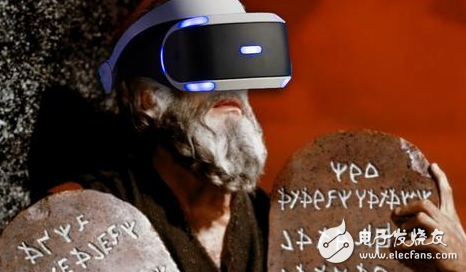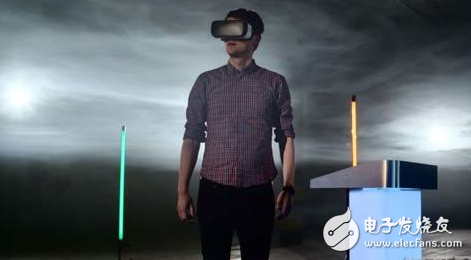According to foreign media reports, VR technology is constantly evolving, but not all developers know exactly which elements can produce a good VR experience. Here are 10 important development rules.
1. Limit player space
If you can run on the entire VR field and play on the grass, the players will definitely play extra fun. But for most people, having a large VR space is unrealistic. Our living room is often small and dirty, with sofas, dirty clothes thrown around, and there is no way to accommodate the entire meadow.
One way to limit the player's actions is to set the right size space, just to allow the player to move around and choose to see things from the right perspective. But don't let the player feel that the space is too small and the activity is very restrained.

2. Remember that not all senses can perceive things in VR
In the VR space, we can only see or hear what is going on around us. We really want to reach out and touch the leaves, feel the heat of the fire, and feel the world in a tactile way. But in fact we can't touch or smell something, because our input device is a controller, not a pair of hands, which always brings a little sense of loss, but it is an indisputable fact.
3. Let the VR character and the actual player movements be synchronized as much as possible
When playing VR games, you stand up, look around, interact with the surrounding objects, who knows that looking down and finding yourself sitting cross-legged on the chair is a strange feeling. Your brain can't cope with this feeling, and you will feel sick or dizzy. Similarly, standing in reality, sitting in the game, is also awkward.
4. Let players accept their own in the game
Playing VR is like being blindfolded. You don't know if the person behind you is doing rude gestures, or if you are immersed in the world of fantasy wonderland, you look stupid.
This kind of scene should really be a documentary: During the game demo, you crawled on the floor of the conference room, but thought you were looking for water in the VR desert.
5. Try to let the player wear gloves
The game character and the player itself are definitely a lot different, whether it is tall or old. This experience is exciting and allows the player to open their eyes. However, many VR games currently allow players to wear gloves, which makes them feel their hands are their own. If you don't wear gloves, look down in the game, obviously these hands are not their own, it will make people feel a little uneasy. If you wear gloves, it won't be so strange.
6. Don't try to develop a function menu that is not necessary
Today's VR world is already very rich, with vast space, fantasy creatures or ghostly horror games. However, be aware that developing too many feature menus will only ruin the player's immersion. And VR is more about a fantasy that is transmitted to other worlds. So it's natural to have a function menu at the beginning of a VR game, but if you want to simulate a real VR experience, you can't always jump out the words "Save" or "Exit" during the game.

7. The VR experience doesn't have to be too real, too much.
Developers should focus on consistency and consistency. If the player turns his head, the scene in front of him should also move. But when you move forward, there is no need to accurately reproduce the feeling of shaking your head and body in real life, which will make every player feel sick.
If the VR experience is not perfect, the player's expectations will be lower, which makes it easier for them to think that everything in front of them is real.
8. Carefully build your VR kingdom
Motion sickness is a big problem that VR technology needs to solve. One of the main causes of nausea is delay. If you turn around, the slightest delay occurs, even if only a few milliseconds, the player will feel uncomfortable. The frame rate also causes the same problem, which requires setting a higher-value, consistent frame rate during development.
In short, the faster VR games run, the less dizzy you feel. this point is very important.
9. Design "beautiful legs" for game characters
Many games don't design legs for the character. In the first-person non-VR game, the player looks down and often does not see the character's legs.
This can be a bit strange in non-VR games, which makes people feel even more strange in VR games because the player actually takes over the character's body. Designing legs for first-person characters is a fairly complex task, and developers need to map real-life actions to their legs. So some developers simply give up on this task. But it's still important to equip your character with your legs.
10. Emphasis on sound design
The immersion that developers can create depends on many factors: first and foremost a visual effect; don't let the player's brain get too much of a shock; sound effects.
Effective use of stereo helps create an excellent atmosphere through the depth and dimensions of the sound, giving the player another hint of where to go. Follow the sound clues and leave the scary dinosaur howling. Using sound to tell a story, combined with visual effects, will be a great way to create a sense of reality.
Single Tower Speaker,Tower Sound System,Energy Tower Speakers,Dj Tower Speaker Price
Newmax Electronics Co.,LTD , https://www.fspeaker.com